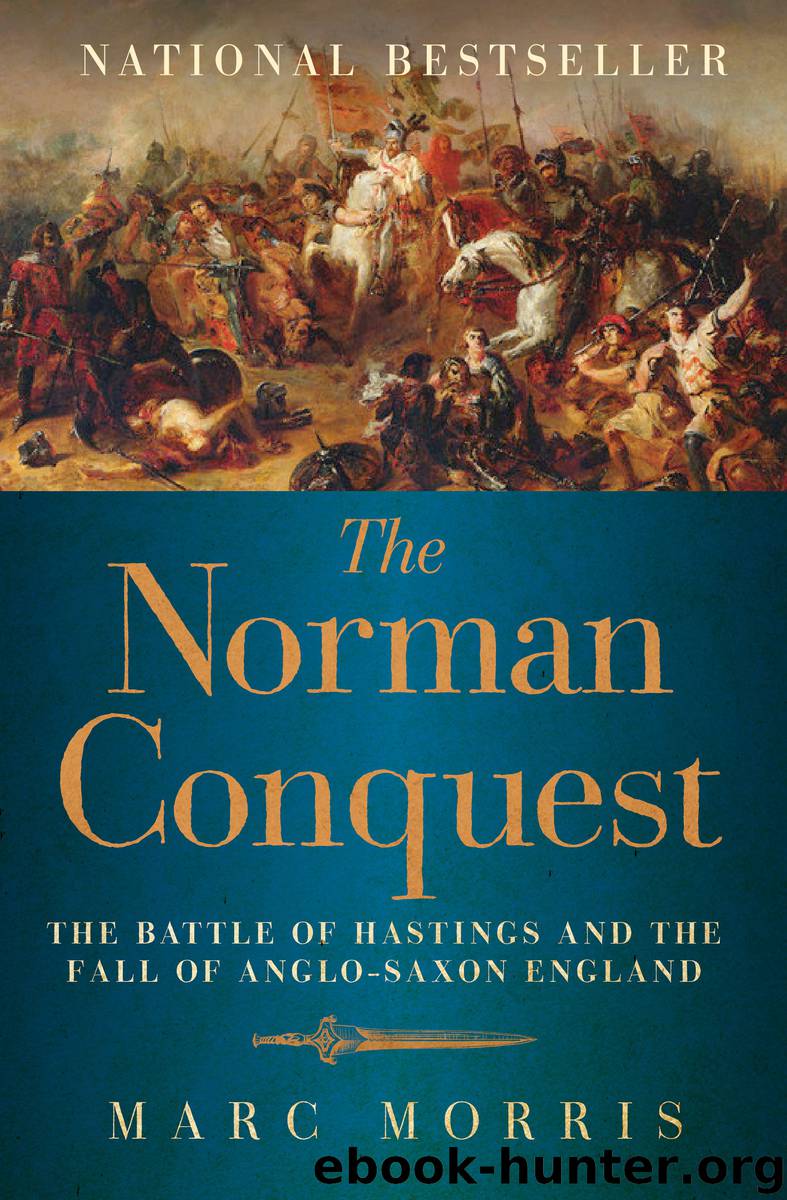Norman Conquest by Marc Morris

Author:Marc Morris
Language: eng
Format: epub
Publisher: Pegasus Books
14
Aftershocks
AS THE YEAR 1069 drew to a close, and with the countryside all around him still smouldering, the Conqueror left his army in camp and went to keep Christmas in York. After the recent waves of violence, and particularly the uncontrollable fire started by the Norman garrisons in September, there can have been few buildings in the city left standing. The cathedral church of York Minster was in a terrible state, ‘completely laid waste and burnt down’, in the words of the Anglo-Saxon Chronicle, its ornaments and documents, according to a later writer, either lost or destroyed. Yet it was almost certainly in the church’s charred remains that William, to quote OrdericVitalis, ‘celebrated the birth of our Saviour’. He was also, of course, celebrating the third anniversary of his own coronation, and this coincidence was not allowed to pass unnoticed. As Orderic explains, at some point during the fighting the king had sent to Winchester for his crown and regalia, and he wore them both in York that Christmas. His northern subjects, so fickle of late in their loyalty, were being reminded that William’s authority was not based simply on overwhelming military might; he was also their legitimate king, anointed by the Holy Church, chosen by God.1
The military might was nevertheless rapidly reapplied. Soon after Christmas William learned the location of some of the English rebel leaders and set out to confront them. When they in turn fled he pursued them across the unforgiving landscape of North Yorkshire, ‘forcing his way through trackless wastes, over ground so rough that he was frequently compelled to go on foot’. At length he came to the banks of the River Tees, where he camped his army for a fortnight, during which time there were significant submissions. Some prominent rebels, says Orderic, appeared in person and swore an oath of fealty; Earl Gospatric stayed away but swore through proxies. Others, such as Mærleswein and Edgar Ætheling, evidently fled further north, eventually finding their way back to Scotland. It is not entirely clear whether the king himself followed them, but, according to Simeon of Durham, his army ‘spread over all the places between the Tees and the Tyne’. Everywhere they went, though, the Normans ‘found only one continued solitude’. The people of Durham had fled to the woods and the mountains; they had heard about Yorkshire’s terrible fate.2
Towards the end of January 1070, therefore, William decided to abandon the hunt. Returning to York he spent some time rebuilding the castles and re-establishing order, before setting off to deal with the remaining rebels in Mercia. Orderic says simply that he suppressed the risings there ‘with royal power’, but we can safely infer that more harrying occurred: the Domesday Book shows a dramatic drop in values for the counties along the Welsh border. The rebel siege of Shrewsbury was raised and more new castles were constructed at Chester and Stafford. All of this must have taken several weeks, and so it must have been well into March before the king reached Salisbury, at which point his troops were finally dismissed.
Download
This site does not store any files on its server. We only index and link to content provided by other sites. Please contact the content providers to delete copyright contents if any and email us, we'll remove relevant links or contents immediately.
Aircraft Design of WWII: A Sketchbook by Lockheed Aircraft Corporation(31772)
The Great Music City by Andrea Baker(21313)
Call Me by Your Name by André Aciman(18964)
The Art of Boudoir Photography: How to Create Stunning Photographs of Women by Christa Meola(17841)
Shoot Sexy by Ryan Armbrust(17142)
Plagued by Fire by Paul Hendrickson(16637)
The Secret History by Donna Tartt(16623)
Portrait Mastery in Black & White: Learn the Signature Style of a Legendary Photographer by Tim Kelly(16484)
Adobe Camera Raw For Digital Photographers Only by Rob Sheppard(16387)
Photographically Speaking: A Deeper Look at Creating Stronger Images (Eva Spring's Library) by David duChemin(16161)
Bombshells: Glamour Girls of a Lifetime by Sullivan Steve(13108)
Pimp by Iceberg Slim(12931)
Ready Player One by Cline Ernest(12838)
The Goal (Off-Campus #4) by Elle Kennedy(12433)
Art Nude Photography Explained: How to Photograph and Understand Great Art Nude Images by Simon Walden(12348)
Kathy Andrews Collection by Kathy Andrews(10520)
Thirteen Reasons Why by Jay Asher(7788)
Wonder by R.J. Palacio(7732)
Goodbye, Things by Fumio Sasaki(7728)
